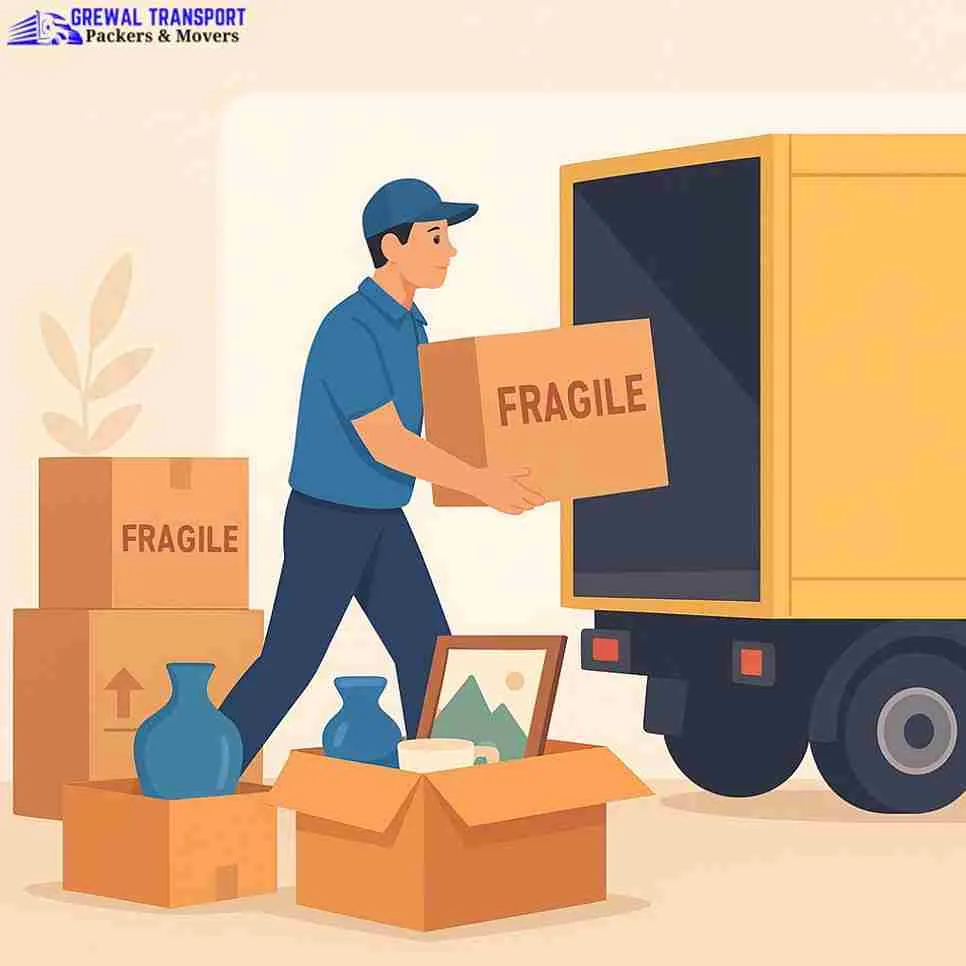Relocating your home or office comes with a significant challenge: moving fragile items safely. From glassware, mirrors, and electronics to antiques, artwork, and décor, these items are prone to damage if not handled properly. A minor bump or careless handling can lead to breakage, financial loss, or emotional distress. This is why professional packers and movers use specialized techniques, tools, and careful planning to ensure your valuables arrive at your new location intact.
Understanding the unique needs of fragile items is the first step toward a stress-free move. While sturdy furniture can withstand a bit of jostling, delicate items like glass, porcelain, electronics, and antiques require extra care at every stage—packing, loading, transportation, and unloading.

Fragile items are delicate by nature, and any improper handling can result in irreversible damage. Unfortunately, many people underestimate the risk during relocation, thinking that wrapping items in newspaper or putting them in a box is enough. In reality, fragile goods need systematic protection and professional handling.
Professional movers use high-quality packing materials such as bubble wrap, foam sheets, sturdy cardboard boxes, and protective padding. They also have the training to handle delicate items carefully, reducing the risk of cracks, scratches, or complete breakage. Planning and investing in proper materials can save both money and emotional stress.
Even if you hire professional movers, there are steps you can take to ensure the safety of your delicate belongings.
1. Use Quality Packing Materials:- Strong, durable packing materials are essential. High-quality cardboard boxes, bubble wrap, foam sheets, and packing paper can absorb shocks and prevent damage. Avoid reusing old or weak boxes, as they can collapse during transport, especially under heavy weight.
2. Label Everything Clearly:- Clearly labeling boxes with “Fragile” or “Handle with Care” alerts movers to handle those items gently. It’s not enough to rely on memory—visual cues ensure proper attention during loading, unloading, and placement in the moving vehicle.
3. Wrap Items Individually:- Each fragile item should be wrapped separately. Glassware, dishes, and ceramics should be covered with bubble wrap or packing paper before being placed in boxes. For extra protection, consider adding layers of foam or soft padding between items. This prevents items from knocking against each other during transport.
4. Avoid Overpacking Boxes:- Overpacked boxes can lead to crushing and breakage. Pack items thoughtfully and fill empty spaces with cushioning materials to prevent movement. For example, use foam peanuts, crumpled paper, or soft textiles to absorb shocks and keep items stable.
5. Professional Handling for Electronics and Appliances:- Electronic gadgets, appliances, and sensitive equipment need extra attention. Ideally, pack them in their original boxes, which are designed to offer maximum protection. If original packaging isn’t available, professional movers use specialized materials like anti-static wraps, foam inserts, and custom crates to protect circuits, screens, and other delicate parts.
6. Secure Transportation:- Properly securing boxes in the moving truck is crucial. Professional movers use padding, straps, and designated placement to prevent items from shifting during transit. Fragile goods are usually placed on top or in separate compartments, away from heavy items that could crush them.
7. Insurance for Valuable Items:- Even with expert handling, accidents can happen. Consider opting for insurance coverage for high-value, fragile goods. Insurance provides financial protection in case of damage and gives you peace of mind during your move.
Experienced packers and movers are trained to handle fragile items with the utmost care. Their expertise ensures that every item, whether a glass vase or an antique painting, is packed, loaded, and transported safely. Here’s how they add value:
Trained Staff:- Movers receive specialized training to handle delicate items carefully during packing, loading, and unloading.
Specialized Equipment:- From custom crates to foam padding and bubble wrap, movers use equipment designed to minimize risk.
Organized Packing:- Items are categorized and packed systematically to ensure stability and protection during transit.
By hiring professionals, you reduce the chances of damage and ensure that your move is efficient and stress-free.
Plan Ahead:- Even fragile items need some preparation. List items that require special attention and inform your movers in advance.
Separate Valuables:- Keep high-value or sentimental items separately and ensure movers are aware of their importance.
Communicate Clearly:- Provide instructions for items that need extra care, such as antiques, musical instruments, or artwork.
Moving fragile items doesn’t have to be stressful. With proper packing materials, careful handling, and professional support, you can ensure your valuables reach your new home safely.
Whether it’s glassware, electronics, antiques, or decorative pieces, following these tips and trusting experienced packers and movers will make your relocation worry-free. Remember, careful planning today saves money, time, and stress tomorrow.
A successful move is not just about transporting belongings—it’s about preserving memories, valuables, and peace of mind. By prioritizing fragile items and hiring professionals who understand their needs, your relocation experience will become smooth, safe, and enjoyable.
Packers & Movers
Packers Movers
House Shifting
Bike Transport
Car transport
Luggage Courier
Goods transport
Office Shifting
Packers & Movers
bike transport
car transport
luggage courier
goods transport
Packers & Movers
bike transport
car transport
luggage courier
goods transport
Packers & Movers
bike transport
car transport
luggage courier
goods transport
Packers & Movers
bike transport
luggage courier
goods transport
Packers & Movers
bike transport
car transport
luggage courier
goods transport
Packers & Movers
bike transport
car transport
luggage courier
goods transport
goods transport
goods transport